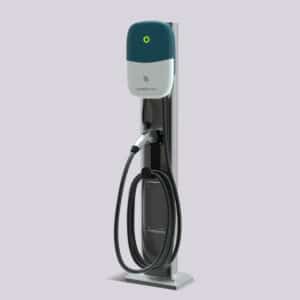- Understanding Ultra-Fast Public Charging
- Benefits of Ultra-Fast Public Charging
- Challenges and Considerations
- Economic Analysis
- Case Studies
- Alternatives to Ultra-Fast Charging
- Expert Opinions
- Regulatory and Policy Considerations
- Conclusion
In the rapidly evolving landscape of electric vehicles (EVs), the integration of charging infrastructure is becoming a pivotal aspect of property management. Among the available options, ultra-fast public charging stations are gaining attention for their ability to dramatically reduce charging times. This article delves into whether ultra-fast charging is always the optimal choice for property managers, considering the various implications it holds for commercial and residential properties.
Understanding Ultra-Fast Public Charging
Ultra-fast charging stations, capable of delivering power outputs exceeding 100 kW, can significantly reduce the time it takes to recharge an electric vehicle. Unlike the slower Level 1 and Level 2 chargers, these stations are designed to provide an 80% charge in just about 20-30 minutes. This technology relies on high-powered chargers that push the boundaries of current EV technology, making them a cutting-edge addition to any property.
Benefits of Ultra-Fast Public Charging
Ultra-fast chargers offer several advantages that can enhance the appeal and functionality of a property. Below are key benefits that property managers might consider:
- Reduced Charging Time: The primary advantage is efficiency. EV owners can achieve a near-full charge in the time it takes to shop or dine, making it ideal for commercial properties.
- Increased Throughput: Faster charging means more customers can charge their vehicles throughout the day, potentially increasing foot traffic and time spent at the facility.
Challenges and Considerations
Despite their advantages, ultra-fast charging stations come with their own set of challenges that must be carefully evaluated:
- High Infrastructure Requirements: Installation requires significant electrical upgrades and robust grid connections.
- Grid Impact: The substantial power demands can strain local power supplies, especially during peak hours.
- Battery Health Concerns: Prolonged exposure to high charging rates can degrade EV batteries faster than slower, more steady charging methods.
Economic Analysis
The financial aspect of installing ultra-fast charging stations is complex and includes both direct and indirect costs and benefits:
- Initial Investment vs. Long-term Gain: The upfront cost of installing these chargers is high, but they may attract more EV owners and potentially increase property values.
- Revenue Opportunities: Charging fees can be a steady source of income, and partnerships with EV companies could provide additional financial incentives.
Case Studies
Examining case studies of successful EV charging implementations by property managers can provide valuable insights and best practices. For example, a property manager in a densely populated urban area may prioritize installing a mix of ultra-fast and Level 2 chargers to cater to different charging needs and optimize resource utilization. Another property manager in a suburban setting might focus on integrating smart charging systems and renewable energy sources to minimize grid impact and promote sustainability. By learning from these experiences and leveraging industry expertise, property managers can make informed decisions and effectively manage their EV charging infrastructure.
Alternatives to Ultra-Fast Charging
For properties where ultra-fast charging may not be the best fit, other solutions exist:
- Level 2 Chargers: These provide a good balance between speed and cost, suitable for overnight charging at residential properties.
- Hybrid Approaches: Combining different types of chargers can cater to diverse customer needs and minimize grid impact.
Expert Opinions
Industry experts emphasize the need for a tailored approach when integrating ultra-fast charging into property management plans. They recommend thorough market analysis and future-proofing strategies to accommodate evolving EV technologies.
Regulatory and Policy Considerations
Regulatory and policy considerations play a crucial role in shaping the deployment and management of EV charging infrastructure. Property managers must navigate regulatory frameworks, permitting processes, and compliance requirements to ensure that their charging stations meet industry standards and environmental regulations. Incentives, grants, and partnerships with government agencies or utility providers can help property managers overcome regulatory hurdles and unlock funding opportunities for EV charging projects.
Conclusion
In conclusion, the question of whether ultra-fast public charging is always the best option for property managers is multifaceted and context-dependent. While ultra-fast charging offers undeniable benefits in terms of speed and convenience, property managers must carefully weigh these benefits against cost, sustainability, grid impact, and long-term battery health considerations. By adopting a holistic approach to EV charging infrastructure, leveraging alternative charging solutions, promoting sustainability, and staying informed about industry trends and regulations, property managers can navigate the complexities of EV charging and provide valuable solutions for EV drivers and communities.
Featured Products
-
 Add To Cart Select options
Add To Cart Select options
Nick Zamanov is a head of sales and business development at Cyber Switching. He is an expert in EV infrastructure space and he is an EV enthusiast since 2012, Since then Nick strongly believed that electric vehicles would eventually replace Internal Combustion Engine (ICE) cars.



